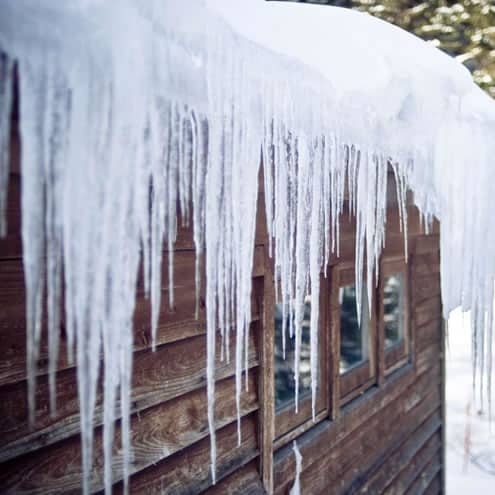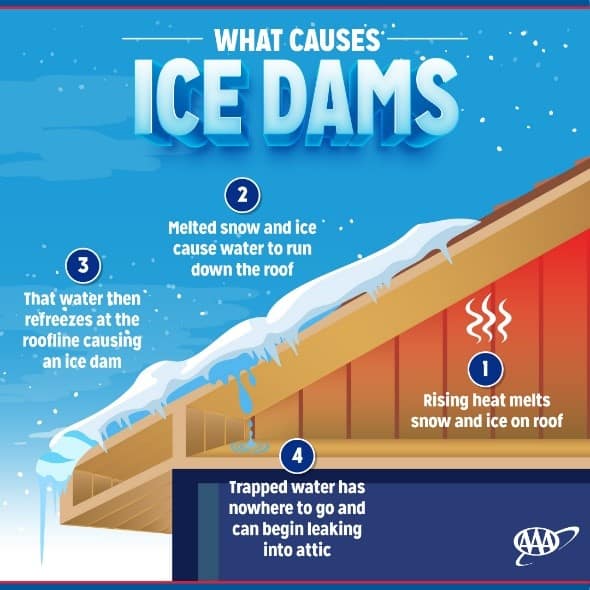Ice Dam and Roof Snow Removal
Protect your roof from damage! Call HighPeak Roofs today to schedule your ice dam or snow roof removal service!
Our Ice Dam Removal Services
We have encountered many companies that use hot water pressure washers and have been unsuccessful in removing ice dams. In these models, the pressure is too high which increases the chance of damaging your roof. They also use a standard pressure washer trigger gun, which can allow water to freeze quickly when not spraying, and damage the pump, coil, or other components very quickly, and lead to inconsistent burner temps. In addition, these models do not utilize the proper nozzle type for the safest and most accurate ice dam removal.
Our Arctic Steamer uses an open-gun setup, which allows water to flow consistently, protecting the unit from freezing. In addition, we have a custom-created nozzle that maintains a 290-degree steam while most other models max out at 250-degrees.
Why the Artic Steamer System is Right for You
- Designed for ice dam removal in sub-zero temperatures
- Safer results
- Faster melting
- Low impact
- Gentle low pressure steam
- Non-damaging to roof materials
- 290 F temperature
- Chemical-free solution



What is an Ice Dam?
An ice dam is a ridge of ice that forms along the edge of a roof, typically in colder regions with snowy and freezing winter weather. It occurs when snow on the roof melts due to heat escaping from the interior of the building or from sunlight, and then the melted snow refreezes at the roof’s edge, where the temperature is lower. This cycle of melting and refreezing can create a dam-like structure that blocks the flow of additional melting snow and ice.
Ice dams can cause several problems for homeowners and buildings, including:
- Roof Damage: The weight of the ice dam and the trapped water can damage the roof’s structure, shingles, and gutters.
- Water Leaks: The ice dam can prevent melted snow and ice from draining off the roof, causing water to back up and potentially leak into the attic or interior of the building. This can result in water damage, including wet insulation, ceilings, and walls.
- Icicles: Icicles can form on the edge of the roof and pose a danger to people and property below if they fall.
To prevent ice dams, homeowners can take steps such as improving insulation and ventilation in the attic to keep it cooler and more consistent with the outside temperature, removing excess snow from the roof, and using roof rakes or heating cables to melt the snow and ice at the roof’s edge. It’s important to address ice dams promptly to prevent potential damage and safety hazards.


